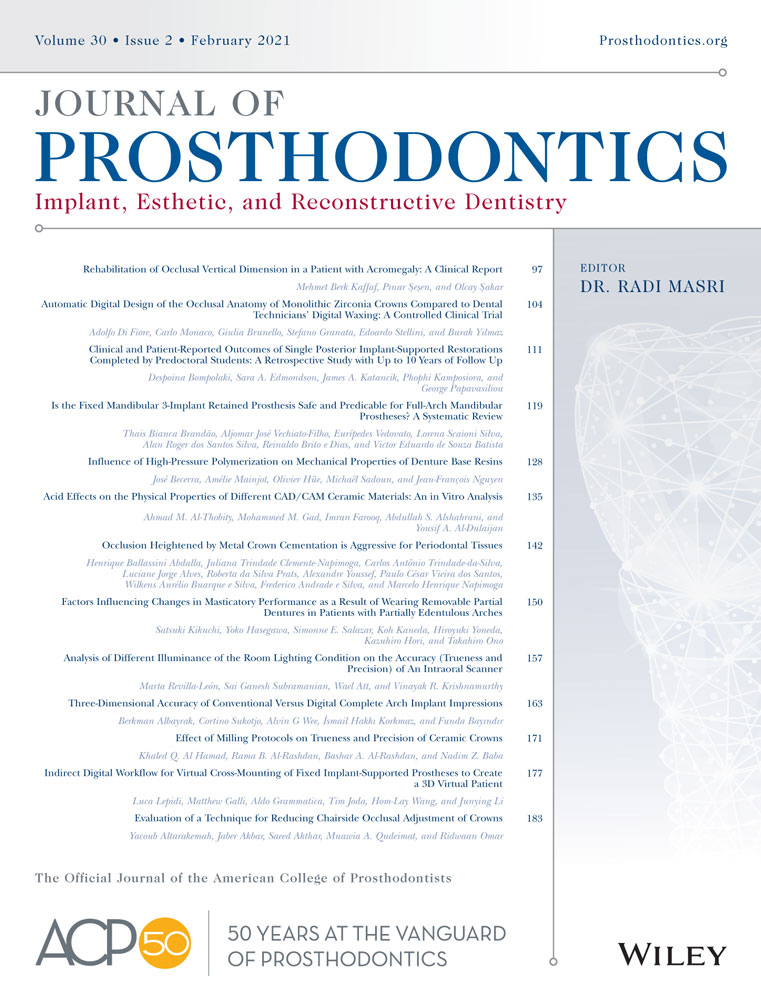Evaluation of a Technique for Reducing Chairside Occlusal Adjustment of Crowns
Abstract
Purpose
To assess whether the occlusion of metal-ceramic crowns, as received from the laboratory, and the time taken to adjust the occlusion of crowns not deemed acceptable, can be reduced by fabricating the crowns with controlled amounts of infra-occlusion during the laboratory phase.
Material and Methods
An opposing set of typodonts, articulated in maximum intercuspal position served as the patient in an in vitro simulation. Seventy-five metal-ceramic crowns were fabricated for the mandibular right second molar with three different occlusal contact specifications: A, control group had occlusal contacts shared evenly by the crown and the neighboring teeth (n = 25); B, first experimental group had the occlusion relieved until 2 shimstock foils were able to be pulled from between the crown and the opposing tooth without tugging (n = 25); C, second experimental group had the occlusion relieved until 4 shimstock foils were able to be pulled from between the crown and the opposing tooth without tugging (n = 25). The occlusion of each crown, as received from the laboratory, was assessed using one of three categories (Excellent, Acceptable, and Poor). Chi-square analysis was used to test the differences in occlusal outcomes between the three study groups. For all of those rated “Acceptable,” the time taken to adjust each crown to proper occlusion was recorded. One-way analysis of variance (ANOVA) and Bonferroni tests were carried out to compare the adjustment times across the three study groups.
Results
The 2-shim group had the best outcome, with 56% of the crowns rated as “Excellent” (p = 0.001). In addition, there were statistically significant differences in adjustment times between the control group (A) and the 2-shim (B) and the 4-shim (C) groups (p = 0.0001), but not between the 2-shim (B) and 4-shim (C) groups (p = 0.08).
Conclusions
Metal-ceramic crowns fabricated with controlled interocclusal relief of 2- and 4-shims each required less time for chairside occlusal adjustment than crowns fabricated in the laboratory to conventional occlusal contact. However, the overall superior outcome, in terms of the possibility for immediate insertion as received from the laboratory as well as favorable chairside adjustment time, for the 2-shim prespacing suggests that this dimension is the preferred option over 4-shim prespacing to reduce occlusal inaccuracies of indirect restorations.




